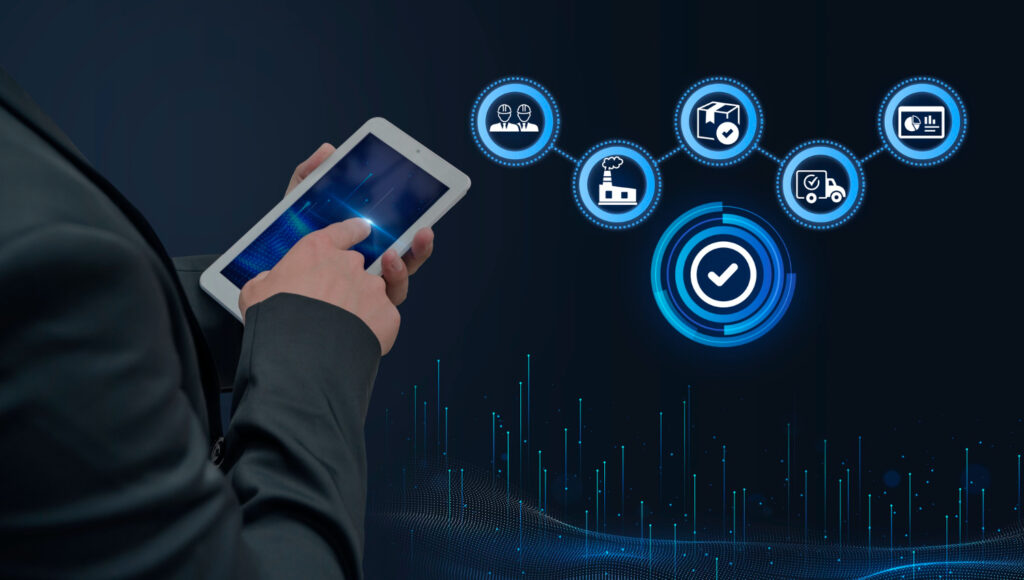As we approach 2025, the influence of 5G technology on business operations is becoming increasingly profound. From accelerating digital transformation to powering new business models, 5G is unlocking unprecedented opportunities across industries. Early adopters are already seeing tangible benefits in efficiency, automation, and innovation—driven by reliable, ultra-fast connectivity. For companies seeking to future-proof their operations and thrive in a hyper-connected era, exploring MetTel’s 5G business solutions is a strategic move, offering tailored connectivity to meet evolving demands.
As organizations pivot toward agile business strategies, 5G stands as a catalyst for unleashing more intelligent infrastructure, enhanced collaboration, and robust digital ecosystems. This rapid shift is expected to intensify further by 2025, as edge computing and network customization become mainstream practices. Adopting 5G not only amplifies operational capacity but also redefines how businesses manage real-time data, customer experiences, and supply chain logistics.
Private 5G Networks: A Game-Changer for Industries
Private 5G networks are poised to revolutionize operations across various sectors, including manufacturing, transportation, and energy. By offering enterprises their own dedicated and secure wireless infrastructure, these private networks deliver ultra-reliable, low-latency communication, which is essential for advanced automation. For example, Verizon Business and Nokia have announced a strategic collaboration to provide private 5G at the Thames Freeport in the UK, supercharging logistics, AI-driven analytics, and digital twin technologies on a large scale—the real-world potential for near real-time communication and predictive maintenance positions these industries to leapfrog traditional competitors.
Within the industrial IoT space, the deployment of private 5G enables factories to seamlessly integrate robotics, sensors, cameras, and connected devices. This paradigm empowers manufacturers to embrace “smart factory” concepts, enabling output gains, process optimization, and new forms of workforce collaboration. For a comprehensive overview, The Wall Street Journal details how private 5G is shaping next-generation manufacturing ecosystems.
Edge Computing: Accelerating Data Processing
Edge computing—the practice of processing and analyzing data near where it is generated—gains new dimensions with the integration of 5G. Businesses leveraging edge architectures can process massive data sets instantly, transform insights into immediate action, and enhance the customer experience through responsive applications. With 5G reducing latency to milliseconds, sectors such as connected healthcare, autonomous vehicles, and city infrastructure find themselves at the forefront of innovation. IBM estimates that by 2025, three-quarters of enterprise-generated data will be processed outside traditional data centers, underscoring the central role of edge computing in digital transformation.
Autonomous Systems and Smart Cities
One of the key catalysts for the adoption of edge and 5G technology is the rise of autonomous systems, including fleet vehicles and drone logistics. Smart cities are also utilizing edge computing to manage a wide range of applications, including traffic and public safety, as well as energy optimization. As the number of connected devices skyrockets, 5G provides the bandwidth and reliability to ensure these urban networks run smoothly, supporting millions of simultaneous connections. For more on the practical impact of edge computing, see Forbes Tech Council’s coverage on edge innovation in business.
Network Slicing: Tailored Connectivity Solutions
Network slicing offers a breakthrough for industries requiring specialized connectivity. With 5G, organizations can partition their wireless resources into multiple virtual networks, each optimized for specific use cases. This means that a single company can run separate, highly secure communications for critical infrastructure while also managing high-volume connections for consumer services using the same physical 5G setup. This flexibility translates into greater operational agility, customized performance metrics, and the ability to integrate new business applications as requirements change seamlessly. The growth of smart grids, remote control systems, and immersive experiences such as virtual reality is accelerating demand for network slicing in 2025.
Supply Chain Optimization Through 5G
Logistics and supply chain management are leveraging 5G’s high-speed, ubiquitous coverage to achieve complete visibility into the movement of goods, dynamic routing, and asset tracking. 5G-enabled IoT brings real-time updates to every stage of the supply chain, reducing response times to disruptions, optimizing inventory levels, and enhancing customer delivery experiences. Fast, reliable connectivity between warehousing, transportation, and retail points shrinks costs and improves planning accuracy. According to Gartner, organizations utilizing IoT and 5G for supply chain processes will reduce logistics costs by as much as 30% over the next decade.
Enhanced Security Measures in 5G Adoption
The rapid expansion of 5G networks introduces a broader attack surface, making robust cybersecurity a necessity. Enhanced encryption algorithms, stronger authentication procedures, and AI-powered threat detection are essential for protecting sensitive data and mission-critical applications. Business leaders must collaborate closely with network providers and cybersecurity experts to anticipate and mitigate emerging threats in real time. The transition to 5G also requires rigorous employee training and clear security policies, particularly as more devices and endpoints come online—coverage on ZDNet details how different sectors are tackling the most pressing 5G security risks.
Conclusion
The future of business is being reshaped by the rapid rollout of 5G technology, which offers enterprises far more than faster mobile speeds. It enables hyper-responsive networks, lower latency, and the capacity to connect vast numbers of devices simultaneously. This shift supports more intelligent factories, data-driven logistics, and seamless collaboration across global teams. As companies adopt private 5G networks, they gain greater control over performance and security, while edge computing enables data to be processed closer to the source, providing quicker insights. Network slicing enables the allocation of bandwidth on demand, tailoring connectivity for specific applications, ranging from autonomous vehicles to telemedicine.
Meanwhile, supply chains become more resilient through real-time monitoring and predictive analytics. Strengthened cybersecurity measures further ensure that sensitive data remains protected. Organizations that invest early will be uniquely positioned to lead the digital marketplace in 2025 and beyond.


